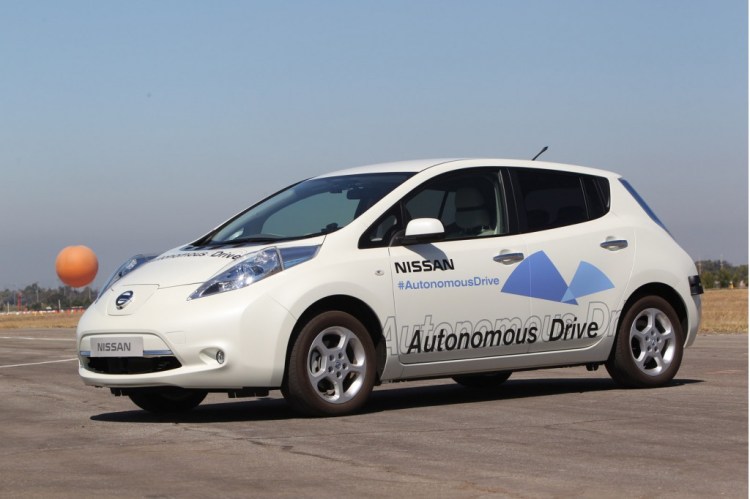Cars that can drive themselves — under certain circumstances — are increasingly in the news.
Even so, Nissan surprised the world with its recent announcement of a program to develop a fully autonomous car by 2020.
The Japanese carmaker obviously isn’t the first to experiment with self-driving vehicles, so how will Nissan contribute to the rise of the machines?
No emissions, no fatalities
At the Nissan 360 event in Southern California, executive vice president Andy Palmer said “zero emissions” and “zero fatalities” will be the twin pillars of Nissan’s future product strategy.
The company exercised a good deal of pragmatism in getting the plug-in Leaf into production, and it seems to be taking the same approach with autonomous cars.
Some of the company’s advanced technology is based on the Safety Shield suite of electronic aids, some of which — including 360-degree sensing, called Surround View — are already available in production cars.
The prototype vehicle for testing autonomous technology is a modified Leaf electric car.
Everything a driver does?
Nissan says the car can do everything a human driver can, including changing lanes and avoiding collisions.
At the event, Nissan prototypes demonstrated several specific behaviors, using Leafs equipped with a variety of cameras, laser scanners, and processing algorithms:
- Self-parking in a parking lot, including identifying an empty space and backing into it (the Japanese custom)
- Autonomous city driving, including four-way intersections
- Autonomous highway driving, including accelerating onto a highway, exiting on a ramp, coming to a stop, lane centering, and avoiding parallel vehicles that are too close
- Swerving to avoid pedestrian stepping out from between cars
- Crash avoidance via changing lanes
Vehicles may not talk to each other
Palmer said that Nissan won’t rely on connectivity to orient its cars. Instead, the prototypes have laser scanners and cameras for eyes and a computer system that can “learn” new roads.
In other words, future robotic Nissans won’t need any infrastructure to support them. Vehicles using Car 2 Car Communication technology require an array of sensors, or at least a pack of cars equipped with the same technology, to know where they’re going.
Signal strength can also be an issue for cars that use GPS to orient themselves.
Tests of vehicle-to-vehicle (V2V) and vehicle-to-infrastructure (V2I) communications are now being conducted in the U.S., Europe, and Asia, using prototype technology that carmakers hope to agree on within a few years.
If Nissan’s more basic approach to autonomous driving works, the company could meet its 2020 goal — just as it met its goal for putting an electric car on sale in 2010.
This story originally appeared on Green Car Reports. Copyright 2013
VentureBeat's mission is to be a digital town square for technical decision-makers to gain knowledge about transformative enterprise technology and transact. Learn More

